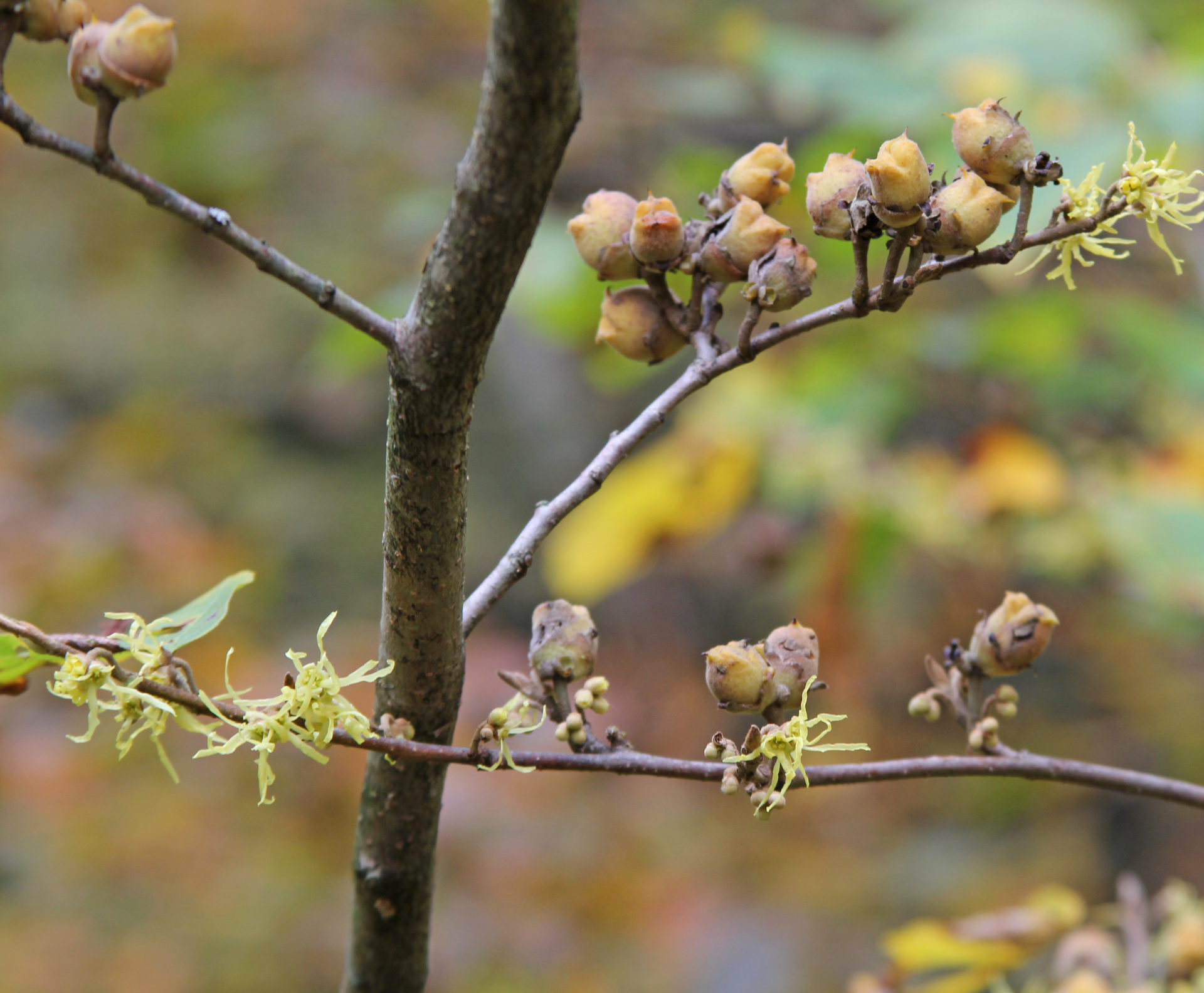One doesn’t typically expect to see plants flowering outdoors at the time of year — except maybe potted mums.
The last native Pennsylvania plant to flower each year is the witch-hazel (Hamamelis virginiana), a small understory tree.
The genus name Hamamelis means “together with fruit,” which refers to the flower blooming at the same time as the ripening fruit from the previous year.
Frilly yellow witch hazel flowers, often in clusters of three and each bearing four thin ribbon-like petals, first appear in late October and usually continue blooming for over a month.
The flowers are believed to be insect-pollinated.
Witch hazel trees grow in what appear to be small clumps, with several stems actually originating from the same root system. They grow slowly, but successfully, in the shade of other deciduous trees. Typical specimens are 8 to 15 feet tall with trunks measuring 2 to 3 inches in diameter.
While they will grow in relatively shady locations, the healthiest-looking trees are usually found growing near the forest edge where they can get more sunlight.
The wavy-edged leaves of witch-hazel are three to five inches long, with very distinctive veins. They are smooth or slightly rough on the upper surface and somewhat hairy below. If divided by the midrib, the leaves appear lopsided — with one side almost always larger than the other.
A bright yellow coloration appears after the dark green chlorophyll fades sometime during October. The unique, one-quarter-inch-high thorn-like projections often found on the upper surface of leaves are actually galls caused by aphids.
Another unusual witch-hazel characteristic is its ability to shoot off its seeds. Sometime during late fall or winter, their yellowish-tan seed pods begin to crack open at the center. The opening pod exerts increasing pressure on the two black bullet-like seeds held within.
When the pressure gets too great, the seeds shoot out somewhat like a slippery watermelon seed squeezed between two fingers.
When I first read about this many years ago, I imagined the seeds shooting off a few feet.
However, in my high school classroom, witch-hazel pods have shot seeds over 30 feet. Try doing that with a watermelon seed.
Witch-hazel’s quarter-inch seeds are eaten by ruffed grouse and fox squirrels as well as other animals. Deer browse on the leaves.
Young twigs are eaten by deer and beaver. Grouse also eat the yellow flowers.
This plant was the source of several old-time remedies, with commercial production of witch-hazel products beginning in New England in the mid-1800s. An over-thecounter ointment is still made through steam distillation of witch-hazel leaves, bark or twigs.
The clear liquid usually has about 15 percent ethyl alcohol. Witch-hazel ointment is sold in drug stores as a mild astringent for external use only. It is used to treat acne, diaper rash and hemorrhoids.
The oil, which is extracted from the twigs, is also added in minute amounts to shampoos, creams, lotions, and other consumer products in an attempt to make them seem more “natural.”
Although it is thought to be our most common small tree, many people have never noticed it. The best time to prospect for witch-hazel is just after most trees have shed their leaves.
It is not unusual to see a witch-hazel still blooming at Thanksgiving or even into early December.
This column appears in the Nov. 24-Dec.1 edition of the Centre County Gazette.



